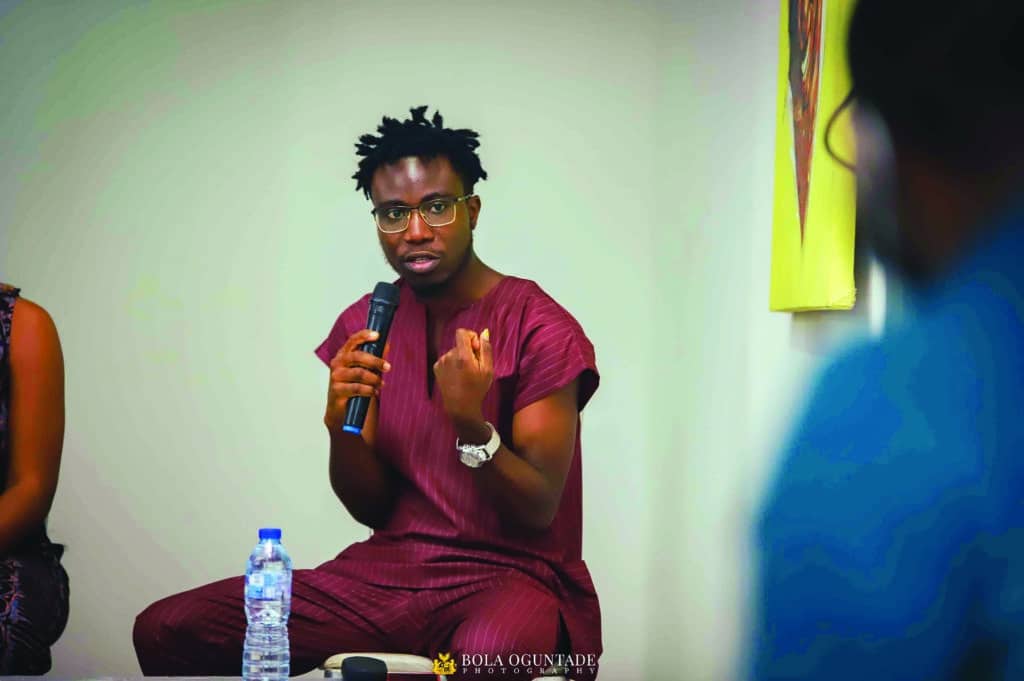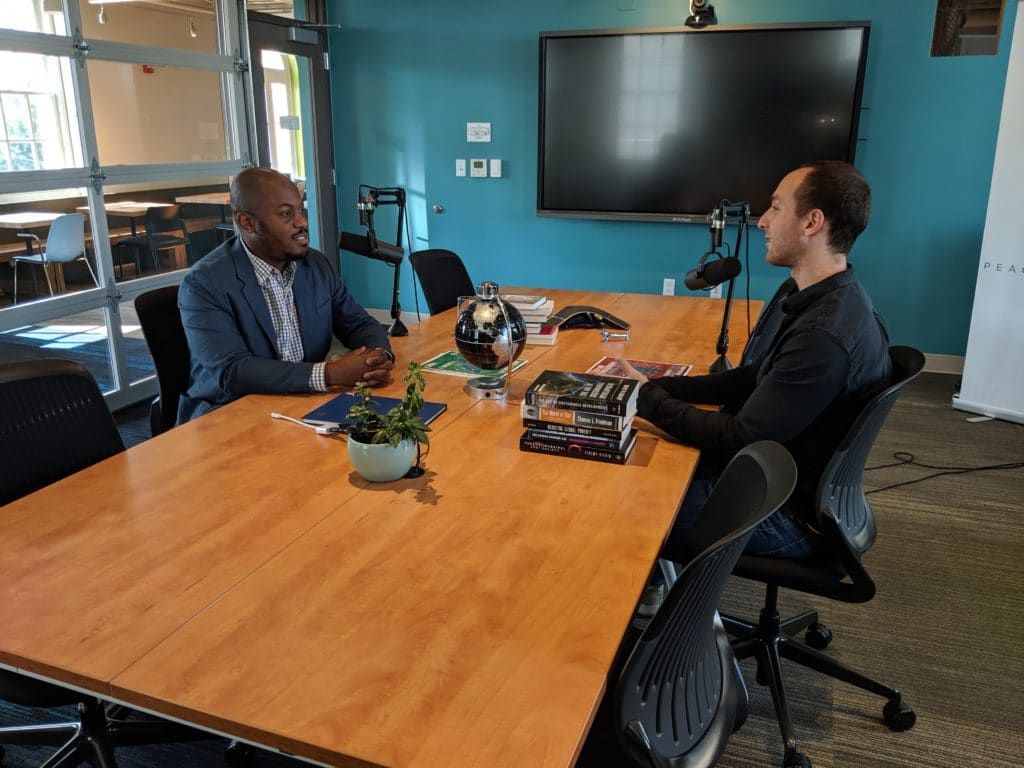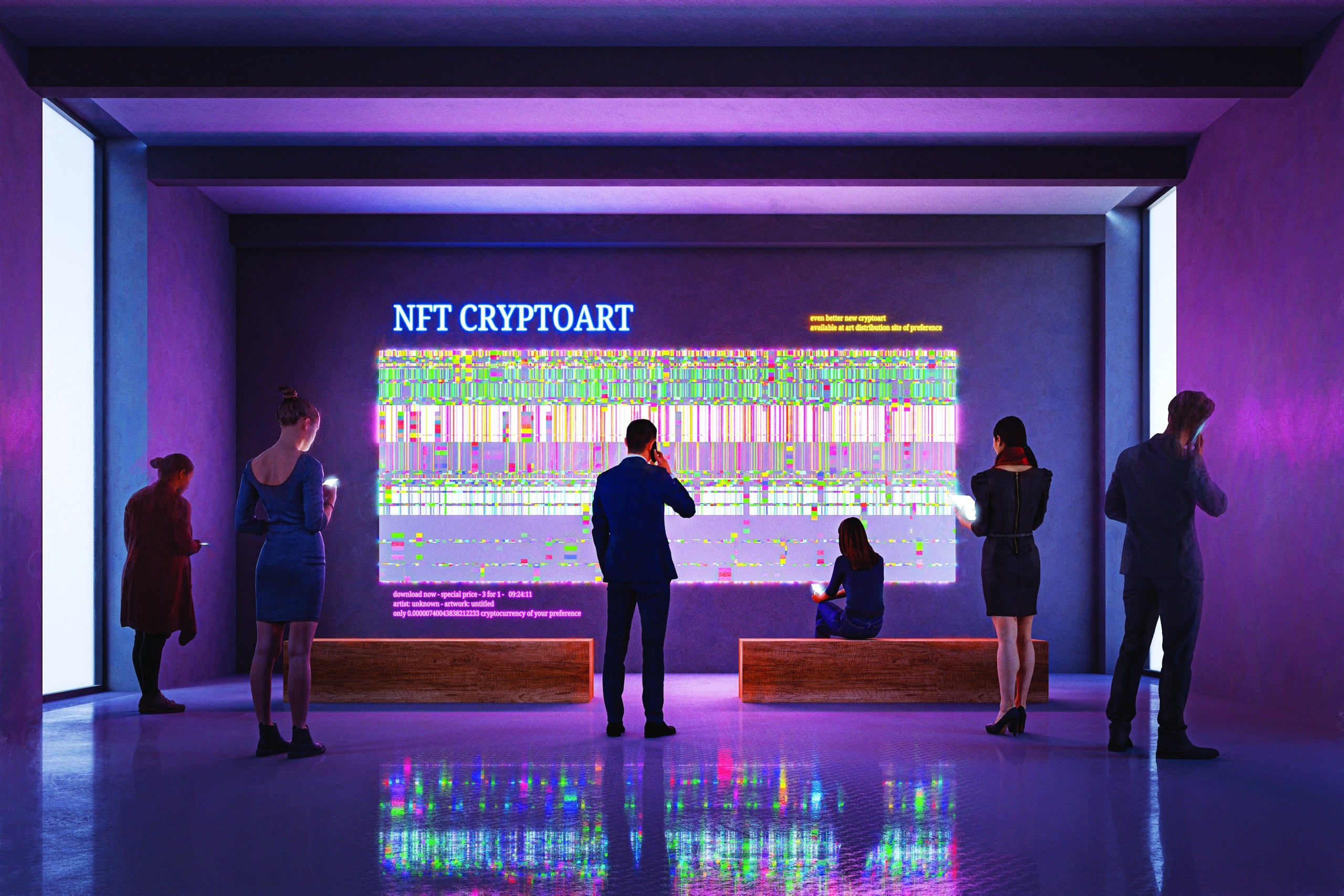Art’s valuable digital future, a recent boom in NFT sales and blockchain with an important role in preserving an artist’s legacy.
“The first thing I tell people when I’m talking to them about NFTs and cryptoart is ‘don’t overthink it’. When I first entered the space, I didn’t fully understand what I was doing. I had to learn by doing,” says Nigerian-born Prince Jacon Osinachi, a self-taught digital artist who found his voice using Microsoft Word.
Years before NFTs became a thing, Osinachi entered the cryptoart space in 2017 when he discovered the R.A.R.E Art platform.
“As an artist, I wanted to show my work beyond Instagram. I wanted to reach a wider audience,” he explains. “They were talking about something called cryptoart which means you put your art on the blockchain. A lot of people get to see it and you also get the chance to sell it.”
NFTs, or non-fungible tokens, are a way of buying or selling anything digital – like art – using cryptocurrency. As little as four years ago, people were not collecting art on the blockchain but Osinachi saw its potential and the following year, his work was taken to Ethereal Summit (where Edward Snowden was a key speaker this May).
Loading...
“The current hype we’ve seen in the NFT space started around late 2019 when people started paying attention to, and collecting cryptoart. The pandemic helped to boost this because people weren’t going to physical galleries. The blockchain became a space where people could converge and look at good art.”
Osinachi is currently hosting virtual workshops to help onboard African artists into the cryptoart space. He believes that while the NFT space will co-exist with traditional art going forward, blockchain has an important role in preserving an artist’s legacy.
“The space is growing. I wouldn’t say that in its entirety it is going to be the future of art, but for artists like myself, it is something that has changed digital arts. People can now collect digital art, as opposed to copying and pasting it and then claiming that they own it,” he adds.
“The metadata on the ownership is on the blockchain – this means there’s provable scarcity which makes it a valuable. For digital artists, it’s a big leap.”
Using digital art marketplaces like SuperRare, Osinachi has managed to sell his work to global collectors, many of whom are anonymous. The beauty of blockchain is that when Osinachi’s art moves from one buyer to another, as a creator, he is always aware of this exchange and his royalty fee of 10% is ensured for life, no matter how much a piece sells for. For a collector, an NFT doesn’t necessarily mean owning the art, rather the payment is for the metadata and this opens up the possibility of reselling the NFT at a later stage for more money.
“Whoever gets to buy the art doesn’t get to lock it up like they do in the traditional art world. Anybody can see it and know that this wallet address owns this work. And in terms of teaching African history, anybody can have access to it,” explains Osinachi.
Not just making money, but digitizing art history
For Osinachi, there is far more to the blockchain than the world of finance, cryptocurrency. While the recent boom in NFT sales has seen many artists considering minting their creations, it has also led to social change – the ability to preserve art history previously stored in physical archives.
Mohamed Amin’s historical Camerapix collection, for example, contains 2.5 million still photographs and 6,000 hours of raw video footage capturing African history. Considered one of the world’s greatest unexplored historical archives, it contains images of the events surrounding post-colonial Africa, Saudi Arabia, Pakistan and Afghanistan. Amin’s son, Salim Amin, has been working tirelessly to categorize and digitize this collection and ultimately bring it into a format that is presentable to the world – onto Ethereum.
“When this whole NFT craze started, a lot of artists saw it as a way to make money. What it really is, is a new technology that will unlock many new monetization models, not just for artists. It’s a way to craft a story,” says Andrew Berkowitz, the project lead for $Afrofuture, an Ethereum-based social currency looking to unlock new funding for African creatives.
“Blockchain is a whole new model for how we can take these archives and start to really roll them out into the world in a way that catalyses conversations and creates a community.”

“The current hype we’ve seen in the NFT space started around late 2019 when people started paying attention to, and collecting cryptoart.” – Prince Jacon Osinachi, digital artist
Working closely with Camerapix and The Mohammed Amin Foundation, Berkowitz is exploring new ways for historical archives to be presented to the world (and monetized). He’s created something called the Genesis NFT Drop where five, rare images from Amin’s archive will be up for auction every quarter as NFTs. The proceeds from each sale will be used to commission African artists, provide grants to museums to help them preserve their content digitally and train local archivists. (Currently, The Mohamed Amin Foundation flies in archivists from Europe, the United States and the United Kingdom to Nairobi to store content and retrieve metadata.)
“We’ve digitized whatever we can with the resources that we have, but we’ve only scratched the surface,” says Amin’s son Salim, the chairman of Camerapix and The Mohamed Amin Foundation.
“NFTs are a new platform but for us, it’s another opportunity to be able to showcase the work, hopefully raise some money, train young Africans across the continent into being good archivists and preserving our content, our storytelling, and not lose this very precious history that we have.”
“And we want this to serve as a new model because there’s plenty of these historical archives all over the world… it’s a way to use this new technology and it’s not just about making money. Our aim to change the way African history is taught and appreciated across the world,” adds Berkowitz.

“What blockchain really is, is a new technology that will unlock many new monetization models, not just for artists.” – Andrew Berkowitz, the project lead for $Afrofuture, an Ethereum-based social currency looking to unlock new funding for African creatives
From Momint, a new South African social media marketplace where creators can sell their works as NFTs, to the Worldart gallery in Cape Town launching its first NFT gallery auction by local artist Norman O’Flynn, the local NFT scene is only getting bigger.
Says Osinachi: “We’re only just scratching the surface in terms of what the blockchain can do for us. Whatever you can think of, the blockchain is there to help and as time goes on, we’re going to be seeing some interesting use cases arise.”
By Tiana Cline
Loading...
